In classic car and hot rod engines, use a high-zinc motor oil all the time. Read on for details.
- What is high-zinc motor oil?
- How do ZDDP additives work?
- Flat-tappet cams vs. roller cams
- The role of piston rings
- Do you always need an oil with ZDDP additives?
Thanks to Hugh Ashburn for asking on our Facebook page about using high-zinc oil in older engines. Specifically, should you use a motor oil with ZDDP additives only during engine break-in or throughout the engine’s lifespan?
https://youtu.be/e7E6UzcD-Tw
What is high-zinc motor oil?
Zinc dialkyldithiophosphate (ZDDP) is the most common zinc-based additive and is used primarily as an anti-wear agent to prevent premature engine wear. It also provides corrosion and oxidation protection.
However, because the zinc and phosphorus found in ZDDP can negatively affect catalytic converters, it has been phased out of motor oil formulations in recent years.
Reducing ZDDP has drawbacks, as classic-car owners have found. Older vehicles with flat-tappet camshafts and, in particular, engines that include high-tension valve springs or other modifications that create high contact pressures, can suffer premature wear due to reduced ZDDP levels.
For best protection, engine builders and gearheads typically use high-zinc and high-phosphorus motor oil to offer extra protection for flat-tappet cams, lifters and other components during break-in.
AMSOIL Break-In Oil, for example, contains 2,200 ppm zinc and 2,000 ppm phosphorus.
How do ZDDP additives work?
ZDDP anti-wear additives are heat-activated, meaning they provide wear protection in areas of increased friction.
As temperatures rise and surfaces come closer together, ZDDP decomposes and the resulting chemistry protects critical metal surfaces.
When parts move during operation, any sliding or rolling motion takes place on top of or within the ZDDP anti-wear film, which reduces metal-to-metal contact.
This is especially important in engines with flat-tappet camshafts or engines modified to create more horsepower. High-tension valve springs, often used in racing applications, also increase the potential for cam wear and require additional ZDDP.
Flat-tappet cams vs. roller cams
The design of flat-tappet cams makes them especially vulnerable to wear. As the name indicates, the tappet – or lifter – is flat. During operation, the cam-lobe slides rapidly over the tappet, increasing friction and temperatures.
A thin oil film is the only barrier that prevents the lifter and cam lobe from welding together.
If the oil film fails or provides insufficient wear protection, the two components can eventually wear the flat-tappet cam and affect valve operation.
Engine power and efficiency can decline if the flat-tappet cam cannot lift the valves enough to adequately charge the chamber for ignition or release exhaust fumes. Because most V-8 engines of the muscle-car era came standard with flat-tappet cams, the problem is especially prevalent to classic-car and hot rod owners.
Roller cams, on the other hand, are differentiated by rolling contact rather than sliding contact. Although costlier, roller cams are common in most modern vehicles and can be retrofitted into classic-car and hot-rod engines.
The role of piston rings
Even though Hugh didn’t ask about it specifically, I should also mention the importance of seating the piston rings during break-in.
Although a new or freshly honed cylinder appears smooth to the naked eye, it actually contains microscopic peaks and valleys. If the valleys are too deep, they collect excess oil, which burns during combustion and leads to oil consumption.
The sharp peaks, meanwhile, provide insufficient area to allow the rings to seat tightly. That means highly pressurized combustion gases can blow past the rings and into the crankcase, reducing horsepower and contaminating the oil.
Find out why championship engine builder Jesse Prather requires his customers to use AMSOIL Break-In Oil.
Breaking in the engine wears the cylinder-wall asperities, providing increased surface area for the rings to seat tightly. The result is maximum compression (i.e. power) and minimum oil consumption.
Do you always need an oil with ZDDP additives?
Do you need to use high-zinc motor oil in an older engine after break-in, which is typically about 500 miles?
Yes, if you want to maintain horsepower and promote longevity.
Even after the cam has seasoned, it’s still exposed to tremendous heat and pressure, especially in a heavily modified or racing engine. The constant barrage of pressure can rupture the oil film responsible for preventing wear, leading to metal-to-metal contact.
After break-in, we recommend using an oil with at least 1,000 ppm ZDDP in a flat-tappet engine.
That way, you’re providing your expensive engine with maximum protection against wear and horsepower loss.
AMSOIL Z-ROD Synthetic Motor Oil, our primary recommendation for classic cars and hot rods, contains more than…
- 1,400 ppm zinc
- 1,300 ppm phosphorus
Z-ROD also contains potent corrosion inhibitors that protect your engine from rust and corrosion during storage.
Updated. Originally published Aug. 25, 2017.
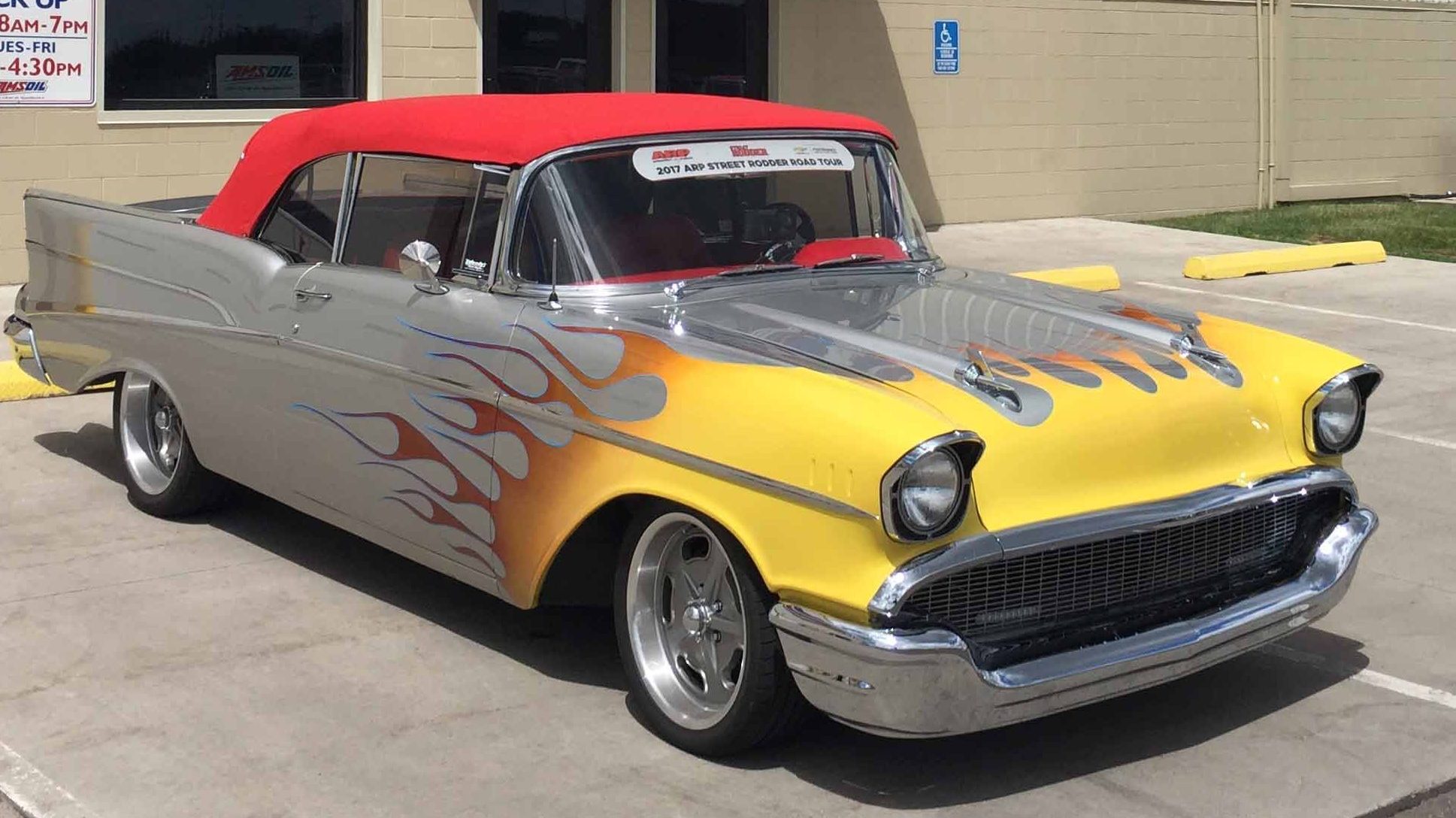

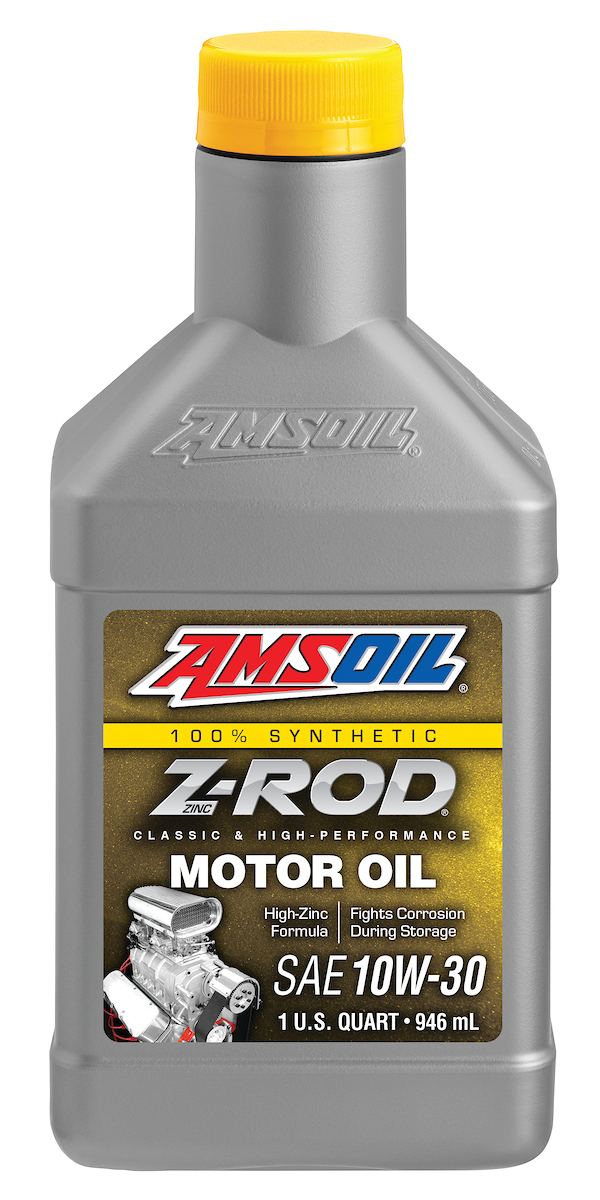


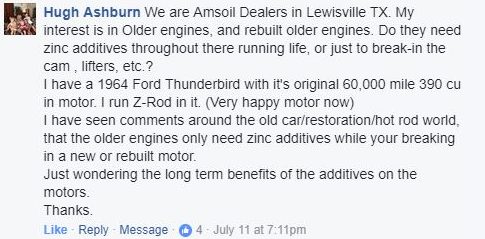
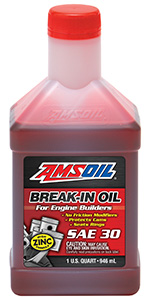
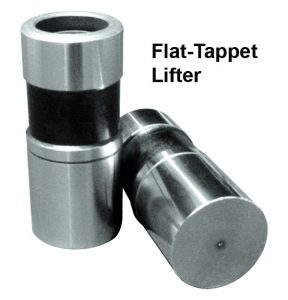
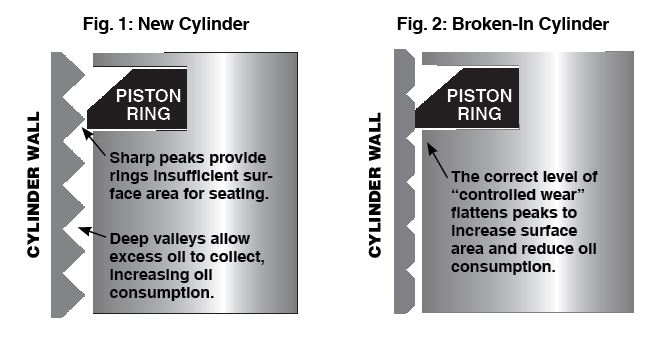


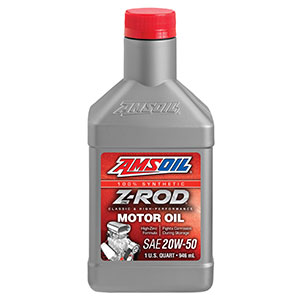
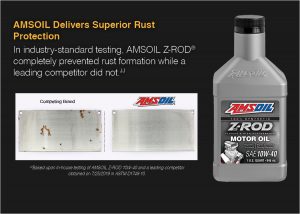
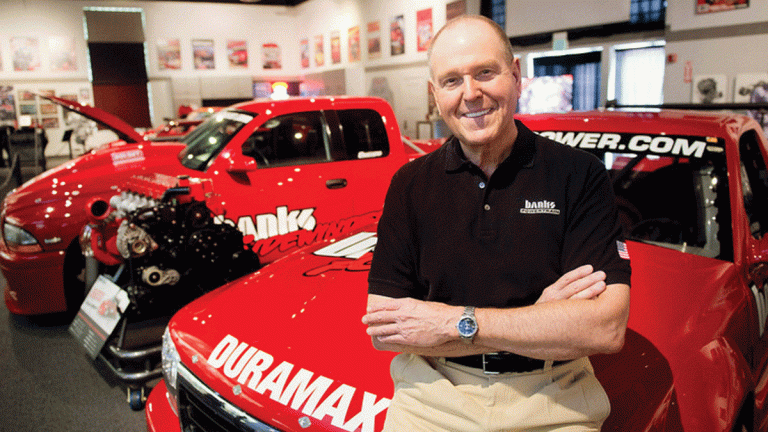

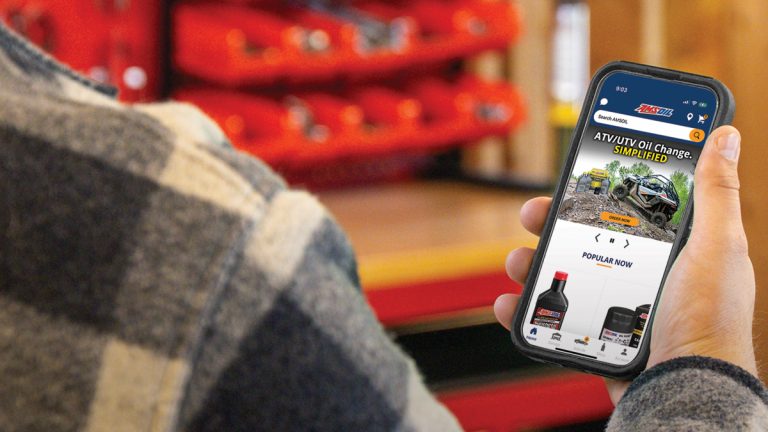

What about overhead cam engines? I believe they have sliding contact between the camshaft and the cam follower. Do they need more zinc than found in today’s SAE SN oils?
Hi Erastimus,
No, they don’t. The API SN specification includes a test specifically to measure cam wear, so you’re covered when using an API SN oil. If you’re interested, see how AMSOIL Signature Series Synthetic Motor Oil fared in the test here.
Thanks for reading.
Nice post John! You explained very well that older vehicles need high zinc motor oil.
I have a 1966 Jaguar XKE 4.2 L engine. is off-the-shelf oil conventional motor oil. acceptable for use with my jaguar or do I need a higher zinc oil. Thanks
Hi Ken,
Contact AMSOIL Technical Services and they’ll be glad to help you: [email protected] or 715-399-TECH.
Thanks,
John
CASTROL GTX OR ANY GOOD 20-50 WILL BE FINE, I ALWAYS PUT A TIN OF WYNNS OIL BOOSTER IN WITH EACH OIL CHANGE AS IT ENRICHES THE OIL AND ADDS GOOD ADDITIVES TO PREVENT WEAR AND IT’S GREAT STUFF, STP DO ONE AS WELL WHICH IS JUST AS GOOD.
How does it help hydro motors on a lawnmower ?
Ams oil uses it I think I put in my mower last year.
What dose it do in there.
Bill
Hi William,
We make an oil specifically for lawnmower hydrostatic transmissions. If you have questions about which product to use in your application, contact AMSOIL Technical Services at [email protected] or 715-399-TECH.
Thanks,
John
IT WILL GO SO FAST YOU WILL HAVE TO RUN AFTER IT. HA HA
Hello; My name is Diego and I live in Argentina. I have a 1967 car, equiped with a Jeep tornado OHC engine. The camshaft is overhead, in the middle of the engine, and act against a solid rocker arm. This rocker act against de valve. The system is similar as old porsche cars. I’m not sure if im being clear with my explanation. Do I need extra zddp protection, as flat tappet engines?
Hi Diego,
Yes, it’s wise to use a high-zinc oil in your engine for maximum wear protection.
Thanks,
John
Okay, I keep hearing that zinc oil additives are not as good as oil made with a zinc additive. Too many know it alls on the internet and I just dont know what to do anymore. Is a zinc additive sufficient, or is oil with zinc preferred? Stories are that adding zinc to oil is bad and can cause issues.
Hi,
Using an aftermarket additive can disrupt the finely balanced formulation of the motor oil. Check out this post for a deeper explanation. We recommend using a motor oil formulated with extra zinc for best performance. That oil is going to be designed and tested to protect your engine as well as possible. It’s best to trust the chemists and engineers who formulate and test oil for a living rather than a “miracle-in-a-can” additive that could alter your motor oil formulation and reduce protection.
Thanks,
John
I have a 1960 Pontiac Catalina. I don’t know if it has oil with zinc in it. If a car has been using oil without zinc can you go back to using oil with zinc? Thank you for the blog and your time.
Hi Lonnie,
Yes, you can safely go back to using a high-zinc oil in your Pontiac. There are no issues with switching between low-zinc and high-zinc oil.
Thanks,
John
I have a 1979 Lincoln. Original 400 CI engine with 2bbl carb & and about 70,000 miles. This is a basic Ford/Motorcraft stable engine which had been around in various configurations and fitted to a wide range of their vehicles over many model years. In this ’79 Lincoln, it’s obviously not a performance engine; an 8:1 compression ratio and it’s rated at just 159 hp / 315 lb ft of torque. As a 1979 model year vehicle it’s obviously catalytic converter equipped. To add ZDDP or not add ZDDP at oil changes….that is the question. I assume this is a flat tappet engine, so perhaps engine life will be enhanced by the addition of ZDDP. On the other hand, ZDDP is apparently detrimental to catalytic converters. So, what’s the “least wrong” thing to do? Frankly, this old gas hog land yacht is only driven about 1000 Sunday miles a year. It will never reach 100,000 miles during my ownership. It hibernates most of the winter except for occasional monthly cold weather outings for fluid circulation when the roads are dry.
Installing fresh 383 stroker motor using AMSOIL Break-In Oil. After break in what oil could I use? Builder recommends conventional oil. Could I use the Z oil? Also should I use cam breakin additive during break in? Thanks
Hi Harry,
We recommend Z-ROD 10W-30 Synthetic Motor Oil in that engine. It contains 1,400 ppm zinc for added protection. Our Break-In Oil has 2,200 ppm zinc, so there’s no need for a cam break-in additive.
Thanks,
John
Hi John, I’m glad AMSOIL do a synthetic and high zinc oil. I have a vw vanagon with 2.0 cu code air-cooled engine. What’s best for this and who supplies it in the uk please? It probably gets to 140*c in summer, but needs to be thin to get through lazy hydraulic tappets when cold. Cheers, steve
Hi Steve,
Thanks for reading. You can find our UK Distributor here.
Thanks,
John
Hi, didn’t see a answer to what oil is best to use on 79 Lincoln 400 motor. My car supposedly has 62,000 miles. I usually drive it 500 total miles in a weekend. Thx
Hi Tony,
For your engine, call AMSOIL Technical Services for a recommendation (715-399-TECH). They’ll be glad to help.
Thanks,
John
I have a Ford 302/347 stroker with flat tapped cams, which do you recommend?
Hi Joel,
AMSOIL Z-ROD Synthetic Motor Oil is perfect for your Ford. It includes added zinc to help protect that flat-tappet cam. It’s available in 10W-30, 10W-40 and 20W-50.
Thanks,
John